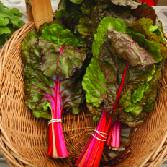-
CATEGORY ::
- All Seeds /
- All Cover Crop Seed
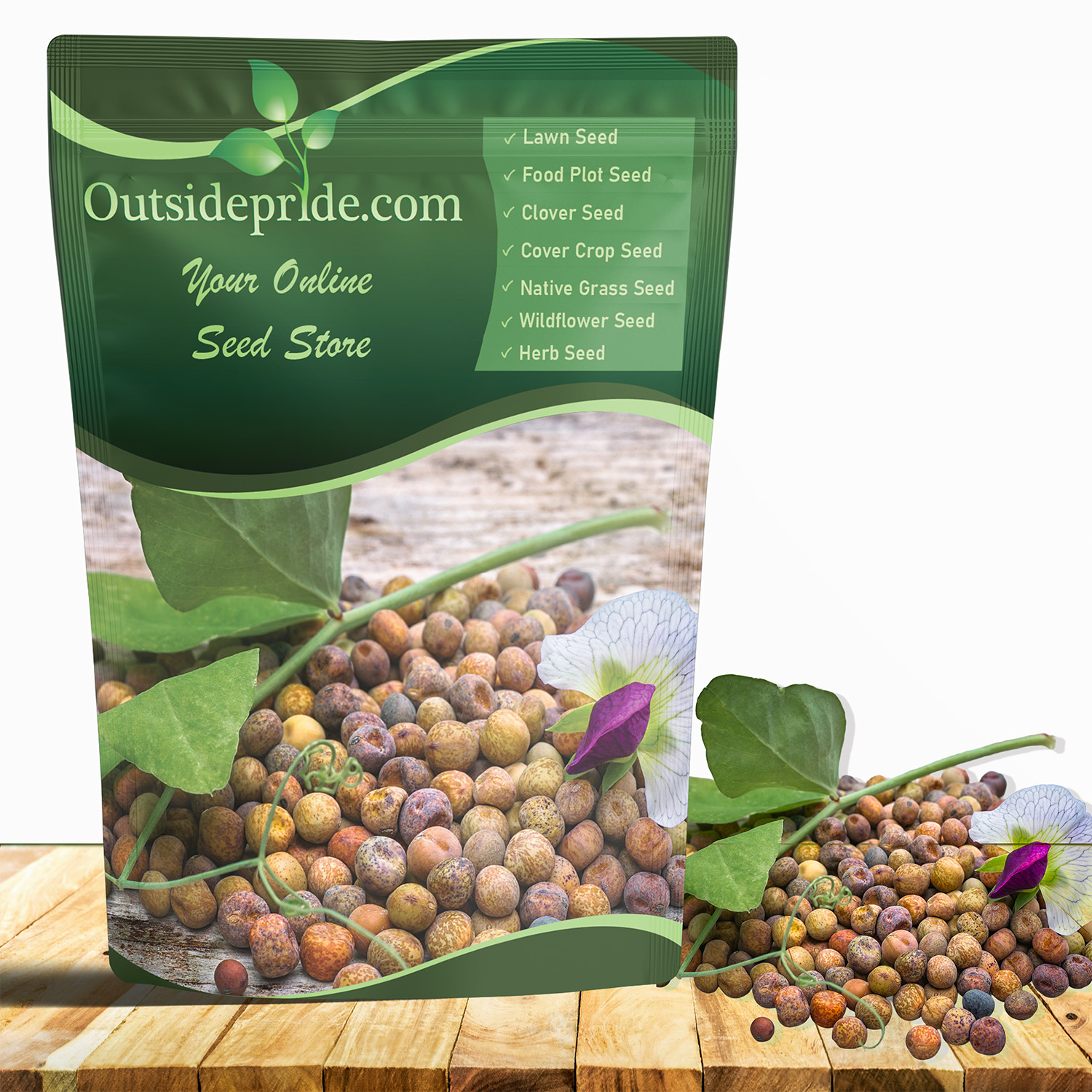






Austrian Winter Peas
LATIN NAME
Pisum sativum
SEASON
Annual
ENVIRONMENT
Full sun
USDA ZONES
2 - 8
SOWING TEMP
40F - 80F
WHEN TO PLANT
Early spring to early fall
PLANTING DEPTH
1 - 2 inches
SOWING METHOD
Broadcast or drill
SEEDING RATE
75 - 100 lbs per acre
PLANT CHARACTERISTICS
Nitrogen fixator, easy establishment
ESTABLISHMENT RATE
Moderate - fast
MOISTURE REQUIREMENTS
Moderate
CROP HEIGHT
24 - 36 inches
COLD TOLERANCE
Excellent
HEAT TOLERANCE
Poor - fair
SHADE TOLERANCE
Poor
DAYS TO MATURITY
60 - 180 days
IDEAL FOR
Cover crop, green manure, pasture, hay, silage, wildlife
AVERAGE GERMINATION
10 - 21 days
LATIN NAME
Fagopyrum esculentum
SEASON
Annual
ENVIRONMENT
Full sun
USDA ZONES
3 - 10
SOWING TEMP
50F - 70F
WHEN TO PLANT
Late spring to mid summer
PLANTING DEPTH
1/2 - 1 inch
SOWING METHOD
Drill
SEEDING RATE
40 - 50 lbs per acre
IDEAL FOR
Erosion control, nurse crop, companion crop, cover crop, food plot, pollinator
PLANT CHARACTERISTICS
Wear tolerant, fast growing, improves soil, nutritious grain
ESTABLISHMENT RATE
Fast
MOISTURE REQUIREMENTS
Moderate
CROP HEIGHT
36 - 48 inches
COLD TOLERANCE
Excellent
HEAT TOLERANCE
Good
SHADE TOLERANCE
Poor
DAYS TO MATURITY
70 - 90 days
AVERAGE GERMINATION
3 - 5 days
LATIN NAME
Brassica oleracea
SEASON
Annual
ENVIRONMENT
Full sun
USDA ZONES
3 - 10
SOWING TEMP
45F+
WHEN TO PLANT
5 - 7 weeks before frost in fall
PLANTING DEPTH
1/4 inch
SOWING METHOD
Broadcast or drill
SEEDING RATE
6 - 10 lbs per acre
PLANT CHARACTERISTICS
Excellent regrowth, winter hardiness, erosion control
ESTABLISHMENT RATE
Fast
MOISTURE REQUIREMENTS
Moderate
CROP HEIGHT
36 inches
COLD TOLERANCE
Excellent
HEAT TOLERANCE
Fair
SHADE TOLERANCE
Good
DAYS TO MATURITY
55 - 75 days
IDEAL FOR
Erosion control, wildlife food plots, grazing, cover crop
AVERAGE GERMINATION
3 - 14 days
LATIN NAME
Crotalaria juncea L.
SEASON
Annual
ENVIRONMENT
Full sun
USDA ZONES
8 - 11
SOWING TEMP
65F+
WHEN TO PLANT
Spring to early summer
PLANTING DEPTH
1/4 - 1 inch
SOWING METHOD
Broadcast or drill
SEEDING RATE
25 - 50 lbs per acre
PLANT CHARACTERISTICS
High biomass, nitrogen fixator
ESTABLISHMENT RATE
Fast
MOISTURE REQUIREMENTS
Moderate
CROP HEIGHT
36 - 108 inches
COLD TOLERANCE
Poor
HEAT TOLERANCE
Excellent
SHADE TOLERANCE
Poor
DAYS TO MATURITY
60 - 90 days
IDEAL FOR
Cover crop, soil improvement, green manure, forage, fiber production
AVERAGE GERMINATION
3 - 7 days
LATIN NAME
Glycine max
SEASON
Annual
ENVIRONMENT
Full sun
USDA ZONES
2 - 10
SOWING TEMP
55F - 77F
WHEN TO PLANT
Spring to early summer
PLANTING DEPTH
3/4 - 1 1/2 inches
SOWING METHOD
Broadcast or drill
SEEDING RATE
90 - 120 lbs per acre
PLANT CHARACTERISTICS
Nitrogen fixator, easy establishment, high yields, oil
ESTABLISHMENT RATE
Fast
MOISTURE REQUIREMENTS
High
CROP HEIGHT
20 - 50 inches
COLD TOLERANCE
Poor
HEAT TOLERANCE
Good
SHADE TOLERANCE
Poor
DAYS TO MATURITY
80 - 120 days
IDEAL FOR
Livestock, cover crop, animal feed,
AVERAGE GERMINATION
5 - 10 days
LATIN NAME
Vigna unguiculata
SEASON
Annual
ENVIRONMENT
Full sun to partial shade
USDA ZONES
5 - 10
SOWING TEMP
70F - 95F
WHEN TO PLANT
After danger of frost
PLANTING DEPTH
1/2 - 1 inch
SOWING METHOD
Drill
SEEDING RATE
30 - 90 lbs per acre
IDEAL FOR
Erosion control, nitrogen fixation, food plots
PLANT CHARACTERISTICS
Fast growing, high protein
ESTABLISHMENT RATE
Fast
MOISTURE REQUIREMENTS
Moderate - high
CROP HEIGHT
24 - 36 inches
COLD TOLERANCE
Poor
HEAT TOLERANCE
Excellent
SHADE TOLERANCE
Moderate
DAYS TO MATURITY
80 - 90 days
AVERAGE GERMINATION
7 - 10 days
About...
This legume is very good for cover crops or green manure crops and since Austrian winter peas build tilth they add organic matter and thus humus to the soil.
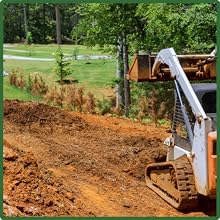
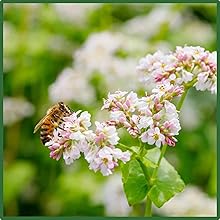
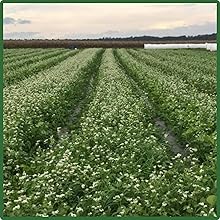
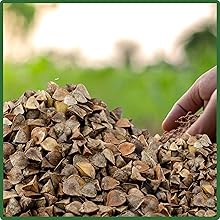
MORE COVER CROP OPTIONS
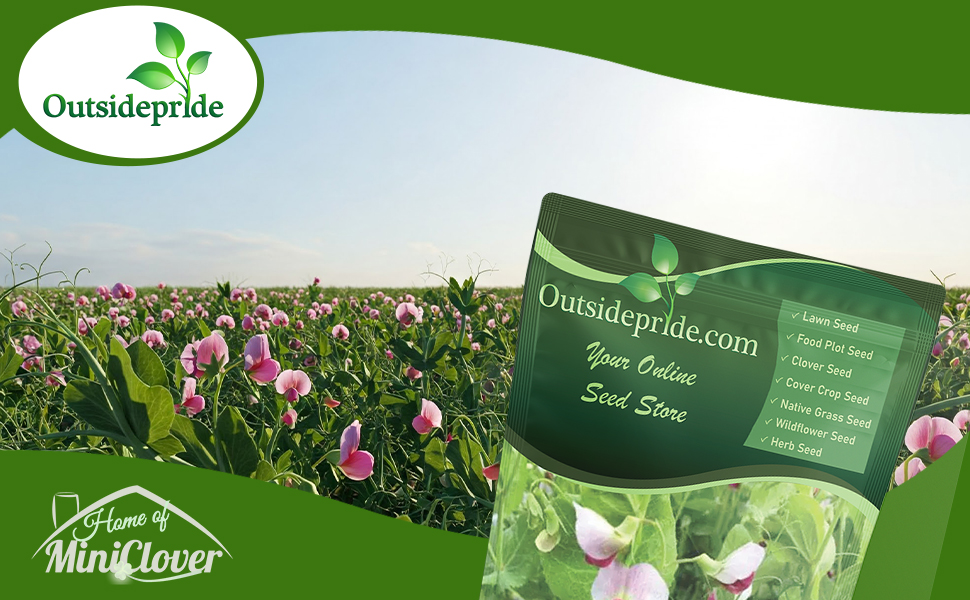
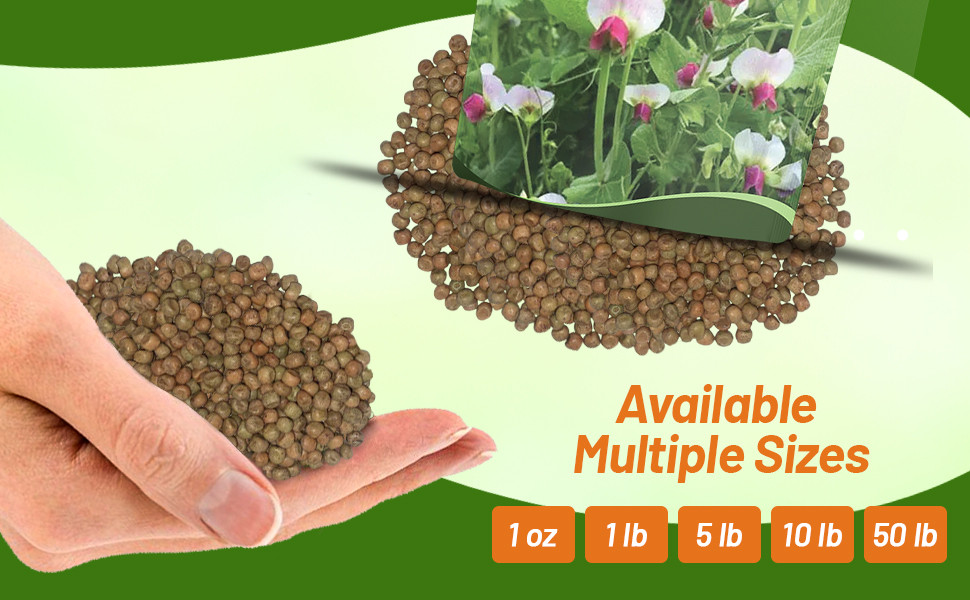
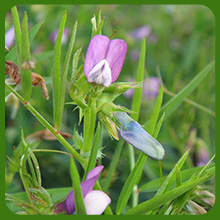
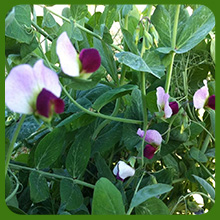
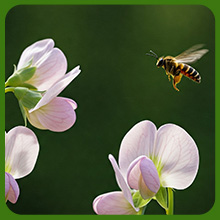
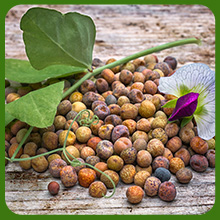
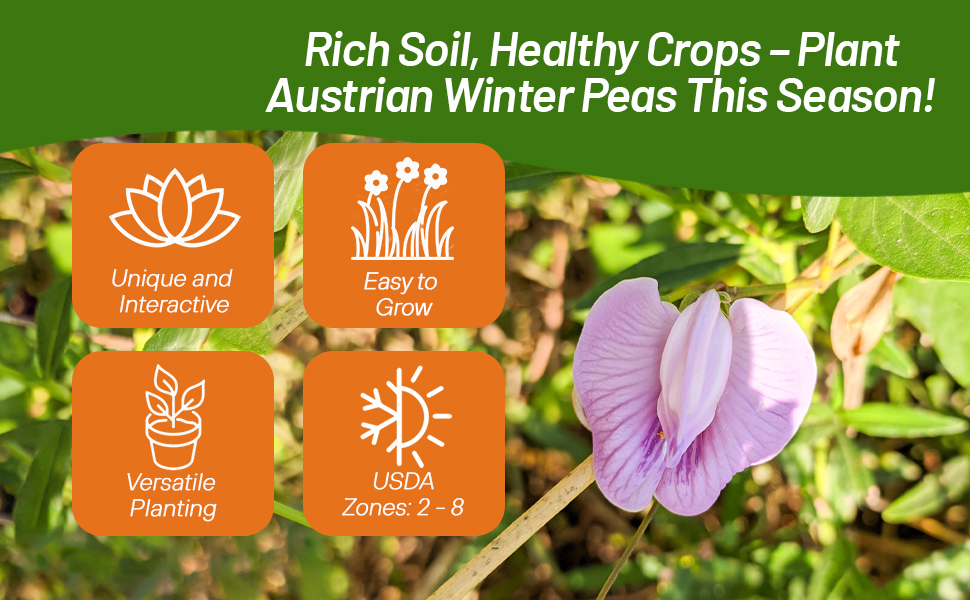
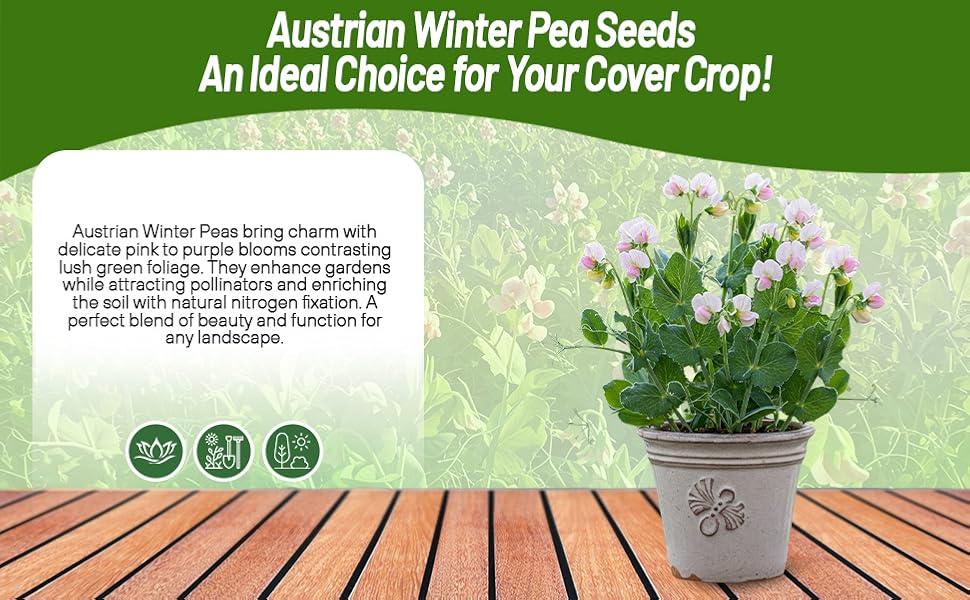
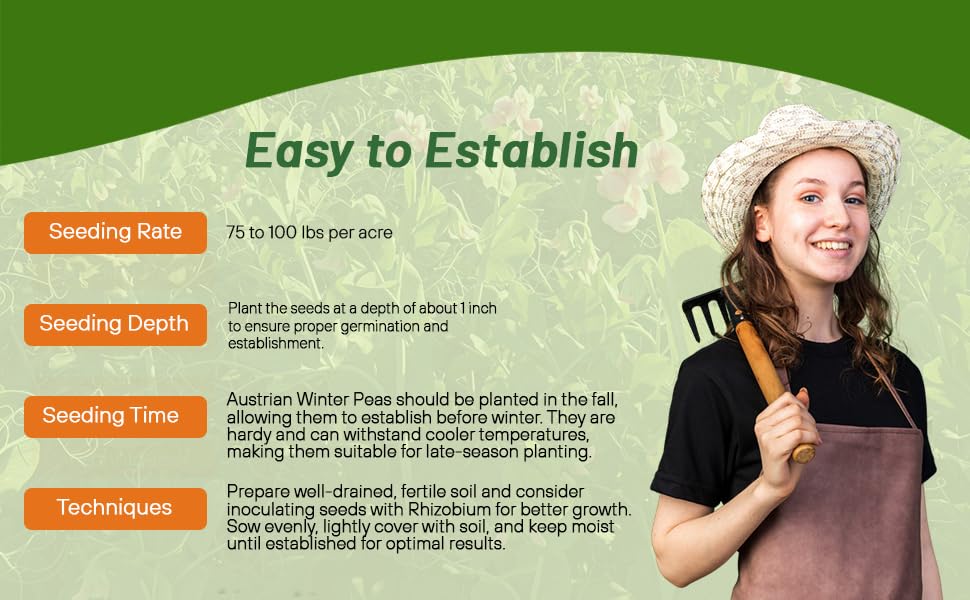
Austrian winter peas are a cool-season annual legume which can make a very attractive food plot on their own or as an addition to a seed mixture planted in the fall to attract deer. Easy to grow and quick to germinate, winter peas are very similar to garden peas and have the same nitrogen-fixing abilities which reduces the amount of fertilizer needed in your garden.
Austrian Winter Peas are also very good for cover crops and green manure crops, building tilth and adding organic matter and thus humus to the soil. Peas like well drained and fertile loam soils. Field peas are used as a winter annual in the South and as a spring annual in the North for soil improvement and for forage. Austrian winter peas are generally grown with a small grain for pasture, hay or silage. They can be used as a cover crop or green manure crop. This cover crop seed does not tolerate high water table or any substantial flooding.
These peas have a vine-like growth that can reach lengths of 3 to 5 feet when planted in fertile soil. Winter peas are highly nutritious and extremely digestible to deer. They carry a protein level between 20 and 30 percent. Both the seed, stem and leaves are browsed by deer. Foliage color is a pale green, and the plant produces pink blooms. Austrian winter peas have moderate drought tolerance but have good winter hardiness.
Seeding Rate
















